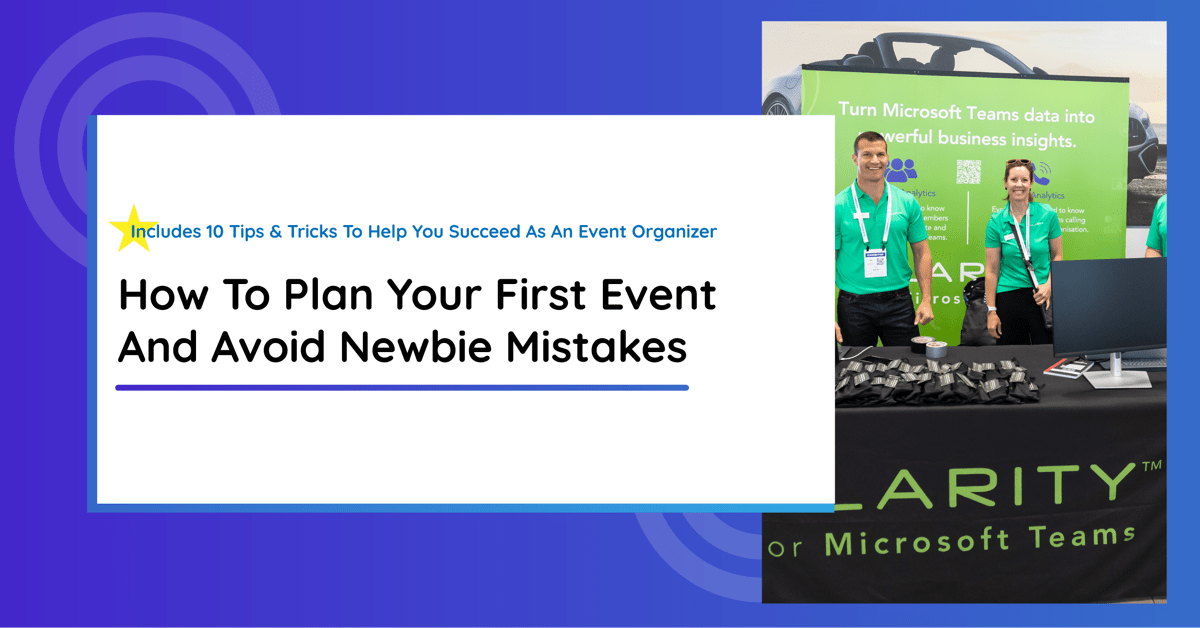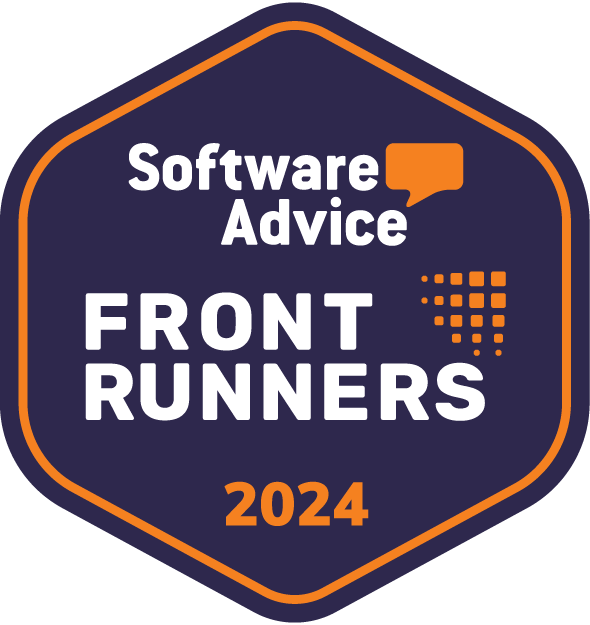
Congratulations! As you’re reading this, you’ve made your first good decision as a new event organizer. You’re here because you want your event to be successful and you don’t want to be caught out like I was.
I am here to share my experience with you and give you some good tips and advice that will set you on the right path to event success!
If you’re like me, you’ve probably spent hours already searching for venues and technology you think you need to run your event. In your mind you’ve got an idea of what you want to create, but are somehow hoping that you can piece it together in time for your big day.
But stop. Before you jump in with both feet, here are 10 tips to get you started in the right direction.
Before you do anything else, if you haven’t already, open Word, PowerPoint, or even get a pen and paper and write down your event plan.
Forget about venue, attendee numbers, budget, sponsors etc. They all come later. Right now you need to make sure that your event has a purpose and need within your chosen industry.
This event plan doesn’t need to be detailed at this moment. It’s for you to sanity check what you’re about to embark on is worthwhile and will resonate with your target market.
Break it down, ask yourself the following questions. If you don’t know the answer straight away, then do some market research to help fill the gaps.
Now that you have your event plan written down, does it make sense? Have you identified a need and purpose and ready to continue? Great.
You might be thinking why isn’t this step about budget? It’s simple, you can’t set a budget until you know costs. So this step is all about finding your suppliers and getting quotes.
The biggest item on your list is finding a suitable venue to host your event in the configuration you need.
If you’re running an exhibition only with no seminars, then you’ll need a venue with a large space that can accommodate all your exhibitors. If you’re running an exhibition with seminars, you’ll need a venue that has multiple spaces that can be used as seminar rooms and exhibition.
Depending on your configuration, you might find that your only choice are event specific venues such as exhibition centers.
Find at least 3 possible venues because your preferred one may not have availability. Remember never compromise your event’s position on the calendar for a venue. You can make your event fit into other venues but finding space on a busy event calendar can be near impossible.
If choosing event specific venues like exhibition centers, be sure to get a detailed quote. Many have hidden costs that were ‘missed’ off the original proposal. These can lead into tens of thousands of dollars in unexpected costs.
Watch out for:
At other venues as well as event specific ones the following hidden costs are commonplace:
Be sure to ask lots of questions to the venue events manager and never take anything for granted. “Oh you can use the venue digital signage”, sounds great! But watch out for the fee that will be lurking after you agree.
Once you have settled with your venue, ask to be put in touch with their AV supplier. Invite them to an onsite meeting and go through your desired needs.
Most AV firms can supply furniture, posters, signage as well as lights and microphones. They may not be the cheapest on these but remember, you want to create a budget. Ask them for an estimate.
Now think about your exhibition, will the exhibitors bring their own stands? Will you supply modular booths, shell schemes, digital printing, booth furniture like chairs and tables? Find your supplier and get a quote.
Once you have these 3 items covered you can start to formulate a budget. Add a buffer of at least 30% to these quotes to account for any deviances.
For the rest of your event, think about the following:
When you arrive at this number, add 35% to it because I guarantee that you’ll need it.
Bonus Tip: Never start selling your exhibition packages until you have a budget figure as once you do, you have very little room for miscalculations.
Now that you have a date, a venue, and a plan for your event it is time to make some basic brand assets and get your event name out into the marketplace.
This is an important step before selling your event space to exhibitors because no one is going to buy exhibition packages from a brand or event that doesn’t exist online.
You may already have a great name for your event and brand and that’s awesome. You’ll want to make sure that you do however cover off a few basics:
Got your name? now you need a logo and brand identity. You may be tempted to do this yourself, or find someone on fiverr.com who can knock up a random logo and pick a random Google font and ship it to you for $30. But do you really want to start your venture on the back of such a thing?
I’ve used both these before and thought I had a great deal. However, you’ll soon find that down the line when you need to send your logo off to the print works, that it isn’t created correctly and they can’t print it, or it comes out a completely different color than what you’re expecting.
Then you end up spending more dollars fixing it.
I recommend that you select a reputable graphic designer who will spend their time learning about your brand vision and will come up with a brand mood board. Following consultation with you, they will move towards a select few mockups for consideration before finalizing with you the chosen design and brand scheme.
Can’t find one? Don’t worry, we can help with exactly this type of problem.
Now you have your domains and brand, it is time to start building your event website and snapping up your social media handles.
Your website doesn’t need to be overly detailed or in depth at this stage. Start with a well crafted homepage that outlines the following information:
Then start building your social presence. Make sure your social accounts are branded and setup properly. Incomplete profiles will not convince attendees and show a lack of due care and attention to detail.
Invest in right sized for the platform social banners for your event pages.
Start posting information about who you are and what your event is about. Building an online presence organically takes time, patience, and consistency.
You can’t rush this. You can encourage it though by getting involved in topics and conversations your ideal attendees are engaged in. This will make them take notice and win you a follow that you can leverage later.
This will also help you get noticed by potential exhibitors who might want to participate in your event. When I started my event, over 50% of my exhibitor interest came from being noticed on social media.
Now you have a venue and budget written down that is achievable you can start the process of selling your event space to prospective exhibitors.
Before you pick up the virtual phone, lets break down what your exhibition pack should contain.
Tip: At this stage you won’t have any imagery to use of previous events. Whatever you do, don’t use stock images or images from other events as yours. Pictures set an expectation and these will essentially be a lie to your prospects at this stage.
Just make sure that your pack is branded and in your color scheme. Include photos of the venue and yourselves for visual proofing only.
Be prepared to answer a lot of questions from exhibitors. Not many will just sign up immediately after reading your pack as this is your first event. You’re going to have to work hard to convince them.
You should be able to answer the following questions:
Some exhibitors may push you for a discount as they will see this as a way of sharing the risk to a degree. Personally I stay strong and say no to this and concentrate more on convincing them that its an opportunity missed if they don’t sign up.
You may choose to offer a discount, but remember you’re budget doesn’t discount, so you need to be sure you have baked in negotiation room into your RRPs otherwise you’re going to fall short.
Some events wait until a pre-determined time to announce all their exhibitors at once. As it’s your first event, you cannot afford to do this. In any case I strongly believe that this tactic is several opportunities wasted.
As soon as they’ve signed up, start promoting them, even if they haven’t paid yet.
Doing so does 3 things for you immediately:
You’ll need an event platform at this stage to capitalize on your attention and start converting interested people into registered attendees.
There is no point or value shouting about your event and who is exhibiting if your event tickets are ‘coming soon’. You have one shot to capture your attendee and you’ve worked hard to this point to grab their attention. So have a way they can register for your event.
Rolling nicely into this tip from the previous it is important for you to select your event platform to run the event.
The choice is very important because as soon as you start registering your first attendees and issuing them their ticket, changing a platform because of a software limitation becomes more and more impossible and could leave you in dire straits as you get close to your event.
When choosing your event platform it is important that you choose the right one for your event configuration.
If your event is small, for example 100 attendees and you’re running one seminar room with a single session at a time, then you could quite easily using something like RSVPify to register your attendees and then use your normal WordPress website to publish your agenda.
If your even is large with exhibition with multiple simultaneous seminars, 10’s of sponsors, and 100’s of attendees, then you probably need something a bit more comprehensive, like Just Attend.
With Just Attend you’re able to manage all aspects of your event:
Perhaps take a look at our entire feature list to see if we’re the sensible choice for your event.
Selfless plug over, there are other things to consider from charging for attendee tickets to actually paying for the event platform subscription itself.
When I was looking for an event platform, I couldn’t find one system that could do everything I needed. I found several systems that could solve individual problems and they all came with 2 common issues:
Then there is the matter of paying for them all. Every event platform I came across wanted full payment for the maximum event size I was planning for upfront before I had event proved interest in my event or actually had sufficient funds raised and available.
The process started by visiting their website and being interested enough to request a demo. A sales person would reach out and a 30 minute demo would be shown to me with a well polished pitch.
This would be followed with a quote and then a demand for payment should I want to access the system, even if I just wanted to validate whether it will do what I want.
The problem with that is you feel pressured in to paying with money you may not have for a solution you’re not sure of.
You know you need something because without it, people can’t register for your event. Yet without them registering and potentially paying for their ticket, you have no revenue to pay for the software in the first place.
So what are your options?
There are some platforms available that instead of charging a license fee they will charge you a commission on every ticket you sell instead. These platforms allow you to access their solution free of charge and help you get going, but are almost all dependent on you charging an entrance fee to your attendees.
If your event is free to attend, then you’re really back to square one.
That is until you use Just Attend. Our platform is totally free to use without feature limitation for your first 50 registrations per event.
This means you get access to trial our system for free and without sales demands so you can be confident our solution is right for your event.
When you’re ready, you can open registration to gather revenue and interest. Once you have registered your 50th attendee, you are then asked for payment. This means that if you never reach 50 registrations our system is totally free for you to use, but also by this time you should have enough ticket or sponsorship revenue to afford to purchase your event plan.
At the beginning you’re going to need friends and lots of them. If you’re well connected in your industry use your influence and friendships to promote your event.
My event data shows that the overwhelming majority of first time attendees hear about my event by word of mouth or from other social accounts that aren’t mine.
You’ll want to create good engaging content. If you can get on established podcasts or vodcasts within your industry then do so. Even pay to have a sponsored slot if you must.
Accessing other people’s networks in your industry is the number 1 most impactful thing you can do. It might cost you $5,000 to sponsor a podcast, but if that podcast reaches 50,000 potential attendees and from that episode you attract 500 registrations, then your cost of attendee acquisition is $10.
Could you have acquired those 500 registrations for $10 anywhere else? Most definitely not.
Don’t be afraid to post the same content more than once. Remember, just because you’ve posted it and seen it, doesn’t mean that every potential attendee has.
People fall in and out of social at different times of the day and week. Some will see it, many won’t, so repost, repost, and repost.
Use the analytics available to you for free on social platforms. Platforms like LinkedIn show you when your audience engages the most. Use that to your advantage.
The goal is to be the first post they see on their timeline when they open their favourite social media app.
Lots of people procrastinate and won’t sign up until the very end, so be persistent and consistent and keep your name and brand living in their short term memory as much as possible. Eventually, they will more than likely register.
Don’t be disheartend if you post something that gets no likes or shares, or you see no registrations. Event registrations hockey stick. You’ll get a short burst of registrations when you announce your event, then a long flat period of sporadic sign-ups right until 2 or 3 weeks before your event when it will rapidly increase. This is normal and also happens to established events. Don’t panic, hold your nerve.

You can offer incentives to boost registrations by capitalizing on national events like Mother’s Day or Black Friday etc. offering one time deals that are too good to miss out on.
Plan for these.
Remember, social media is about sharing value and contributing to your community. It isn’t a place for constant adverts that all say the same thing “register now”, just in 100 different ways.
Come up with a content plan to add value to your community, sharing blogs you create to showcase your knowledge of the industry, write about what you’re doing as an event, celebrate your milestones etc.
People respond better and are more likely to sign up if they can get something in return.
This also begs the question, should you pay for social adverts?
The short answer is an inevitable yes. But you need to be very careful in how you construct these as you can waste a lot of money very quickly and get absolutely nothing back from it.
Planning your advert campaign is important and should never be done on a whim. We can help you with that.
Just because you’ve published information on your website, sent out an email with an attachment doesn’t mean that your attendees or exhibitors have taken notice or even read them.
Never assume that they have and always over communicate if you can.
After initial sign up exhibitors won’t care about your event until they have finished with their last event prior to yours. When that happens, you’ll be firmly in their crosshairs and they will come at you with questions you’ve already answered months ago through you event articles and brochures.
Publishing content like your exhibitor build and setup guidelines online gives everyone an easy reference point to consume information ad-hoc. Be sure to constantly remind them where that information is and how they can find it.
Attendees will only start paying attention to your event maybe a week before it. So be sure to send them reminders on how they can build their agenda, where they can find travel information, and where they can find their ticket for entry etc.
One feature Just Attend has that I find very useful is the ability to resend all tickets out to attendee’s inboxes the night before the event. This means that when they open their email the morning of the event, their ticket is right at the top of their unread emails making it easy to find.
Use your email marketing software to drip feed information and calls to action to different cohorts. You’ll want to increase the frequency on the lead up to your event making sure that each communication is targeted and prioritized accordingly.
For VIPs like exhibitors and speakers it is important to obtain proof they have received and actioned tasks you need them to complete. You can do this in Just Attend by assigning them a task list with due dates that will remind them automatically do complete them.
Live pre-event meetings are a great way of communicating with exhibitors and speakers as they provide a forum for questions and answers. However, finding a time slot that works for everyone will be impossible so make sure you record your session and send that out to everyone invited so they have it to reference.
Don’t leave it until the day to run your event for the first time. Once those doors open, there is no turning back and no room for error.
At least a month before make sure that you do a dry run of your event. By this I don’t mean hire the venue and build your stands or run active sessions. What I mean is make sure that everything you’ve planned for up to this time is tested working and everyone involved knows what is expected of them and when.
As the organizer you should be the first to arrive and the last to leave your event. Getting to your event early gives you a valuable head start to see off any potential issues.
On build day, getting to the venue before your contractors gives you the chance to survey the venue and ensure that the venue have properly prepared the site for your arrival and setup. I have had it where areas hadn’t been cleared which causes delays that will increase your stress levels and set your entire event back.
Hopefully things are moving to plan and you might be ahead of schedule. Don’t get complacent and take your foot off the gas. Use the time to test, test, and test again your systems. Go through your event briefing with staff, get them to simulate what they’re going to do and how.
Liaise with the venue health and safety team to ensure stand builds and infrastructure are compliant and head off any issues while contractors or exhibitors are still onsite. Once they leave, if H&S aren’t happy with the quality of work they have the power to shut your event down in the worst case.
On the event opening day, even if you’re fully prepared, get there at least 2 hours before doors open. You’ll be surprised how things that were working when you left aren’t when you turn up in the morning.
Usually it is because cleaners have been in the venue and unplugged equipment so they can use the power sockets. Other times its hardware that’s overheated, or for whatever reason internet connectivity has stopped working.
All these can add panic to an already highly stressful time for you. So get there early to give you time to address these. The worst case is you have to sit down and catch a bit more sleep before your event starts.
Well, if you’ve made it this far, then I must’ve done a good job and you think this advice is worthwhile. If you think we can help you with your event, why not reach out to us by completing the form below to get you started?
Good luck with your event!
Unique Attendees
Sessions Delivered
Exhibitor Leads Generated
Badges
Printed





